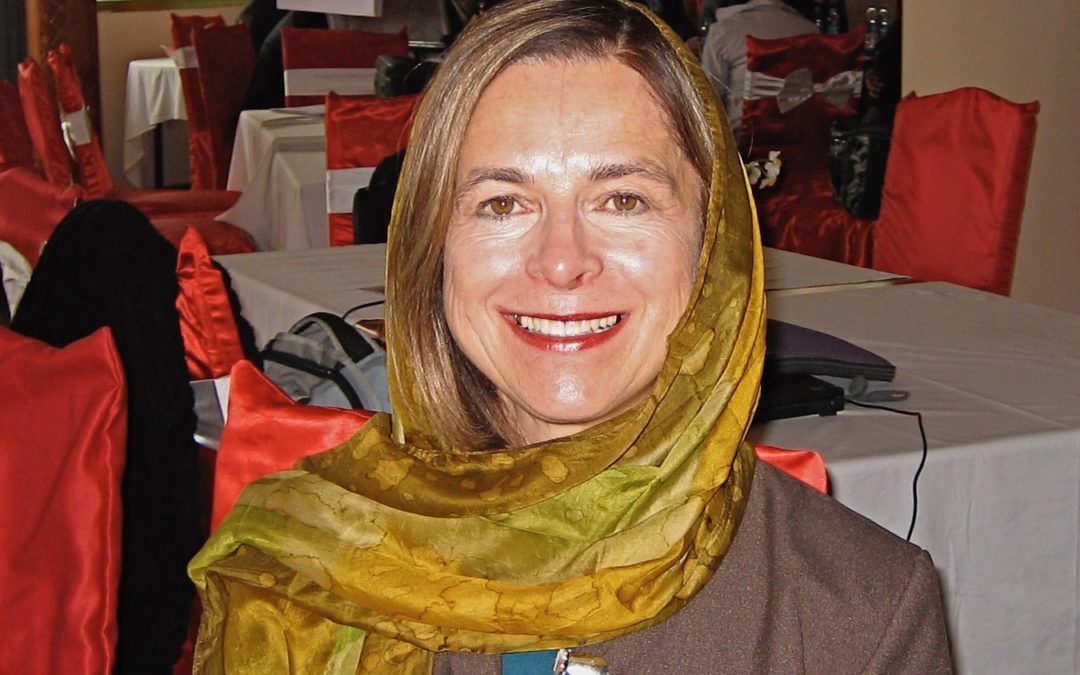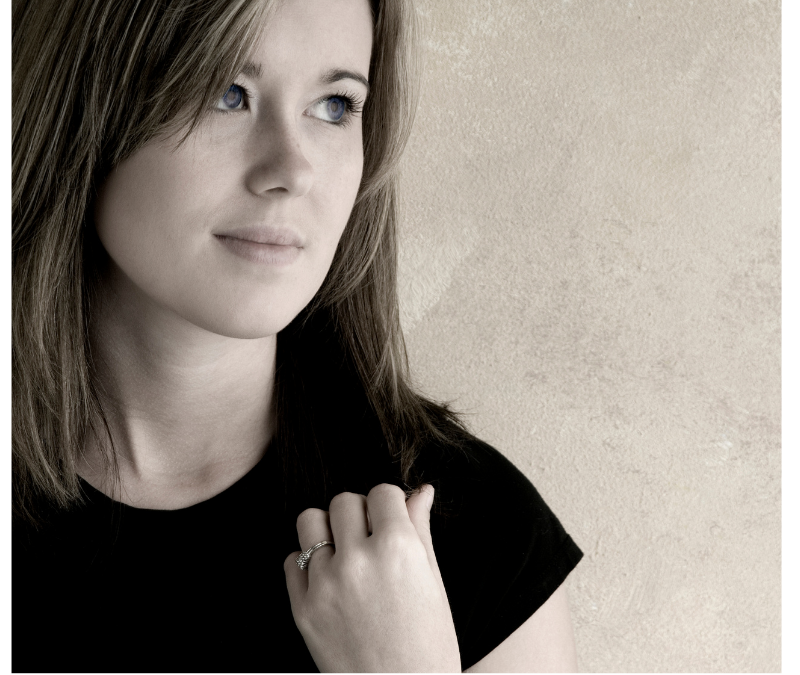
by pam | May 24, 2021 | Feminine Leadership, Leadership
Have you ever hired someone who looked great on paper, had excellent references, prestigious credentials and yet in an interview your gut told you there was something missing? Yet, you hired that person and didn’t listen to what your body was telling you. Within several months you realized you had not made a good choice, as the new hire ended up being highly competitive and out of alignment with one of your organization’s core values of collaboration.
It happens all the time. Why do we value our rational, logical left brain over our intuitive body’s wisdom? It turns out our organizations have been built on a set of beliefs that value the rational, logical left brain over our intuitive and creative right brain. We are beginning to realize the value of our intuition and the fact that leadership is both an art and a science.
In a recent leadership development class on authentic feminine leadership I taught with women leaders from a variety of countries[1], we walked through a number of qualities of authentic feminine leaders including: creativity, collaboration, inclusiveness, and intuition (discussed in more detail here – https://pamela-thompson.com/why-feminine-leadership-holds-the-key-to-creating-a-world-that-works-for-everyone/). I then asked each student to rate themselves on a scale from one to ten related to how well they embraced each of the qualities we had shared. After that, I invited them to revisit their ratings, identify the one most challenging for them related to their leadership, reflect on why, and share their reflections. It turned out intuition was the quality they were most challenged to embrace.
How can we learn to listen to and trust in our body’s wisdom and use it to make better decisions in our work and personal life?
Here are a few tools I use myself and have taught to clients from a variety of countries and cultures to help them get out of their heads and into their bodies.
- Body Scanning – This is an excellent tool to use to become more aware of your body and the messages it sends you. It’s helpful to do this first thing in the morning before you get out of bed or at night before you retire.
Close your eyes and take several deep breaths in through your nose and out through your mouth. Then begin scanning your body from the top of your head to the tips of your toes. Notice any areas of tightness or discomfort. Breathe into those areas and imagine releasing the tightness or discomfort.
- Mindfulness Walking Meditation – Many of us who are busy and driven are challenged to sit down and meditate. If that is you, mindfulness walking meditation may be “just what the doctor ordered”. It’s preferable to do this outside in nature.
As you walk, focus on all of your senses. Feel the cool breeze against your face, smell the salt from the sea, hear the chirping of the birds, see the beautiful vistas or forest you are walking in. When thoughts come in, as they will, imagine they are clouds floating by and let then go or put them in a bubble and watch them float away. I encourage you to do this 3 times a week to start, for 20 to 30 minutes each time. Notice how you feel after each walk and the cumulative effect.
If you wish to learn more about how to “listen to and trust in your body’s wisdom”, I encourage you to read chapter 4 in my book Learning to Dance with Life: A Guide for High Achieving Women. Note that men as well as women have found this book helpful.
I welcome your comments below, in particular on strategies you have found useful to help you to make wise decisions by tapping into your body’s wisdom.
[1] As faculty for Women Leading in Change https://femalewaveofchange.com/reshape-the-future/ – a virtual leadership development program of Female Wave of Change.

by pam | Apr 13, 2021 | Change, Changemaker, Feminine Leadership, Leadership, Women in Business
In a recent post I shared how if you want to “be the change” you want to see in the world, it is essential to do some inner exploration. [1] I call it “exploring your inner landscape” – those beliefs, stories, and emotions that unconsciously run your life.
Many of us from a young age know “in our bones” we are here to make a significant difference in the world. That said, a number of us have no clue as to what that difference is.
To get clear on the difference you are here to make, it is important to uncover your unique talents and identify your passions.
I particularly like the definition Janet and Chris Attwood give to the word “passion” in their book The Passion Test. They say that “your passions are the loves of your life … things that are most deeply important to you … things that, when you’re doing them or talking about them, light you up.” They also note that “passion and love are inextricably intertwined because both arise from the heart. When you follow your passion, you will love your life.”
When you discover your passion and live your life aligned with it, you feel truly joyful, fulfilled, and at peace. It lights your fire and fuels your enthusiasm for life. You feel that you are indeed doing something that makes a positive difference in the world.
We all have unique gifts and talents to share with the world. Here’s a short exercise to help you clarify yours.
1. Draw a chart with two columns. In the first column, write down all the things that you are good at, or things that come easily and naturally to you. They could be things such as athletics, mathematics, writing, whatever you feel fits.
2. In the second column, write down the things you enjoy doing. They could include being in nature, teaching others, using your body, playing piano….If you feel challenged by this, think back to what you enjoyed doing as a child.
3. Now look at both lists and circle the items that are similar or identical. Then review the circled items. Go inside and get in touch with the feeling each one evokes inside you. Does it excite you? Does it have little or no effect on you? Rate each item on a scale from 1 to 10 according to the level of passion you have around it (1 being “no interest at all” and 10 being “red hot”).
I encourage you to do this exercise. Sharing your findings with others has additional impact as you may gain insights and support from them.
I’d like to emphasize that just being good at something doesn’t mean it is your passion or will fulfill you if you work in that area. What you’re good at can provide clues to our passions but are not necessarily connected with them. A passion is often a blend of what we love and what we’re good at. As well, a passion may change during our lifetime. [2]
So, what’s next? After you discover your passion(s) it’s helpful to identify either a new area of work you wish to pursue or a volunteer activity that will “light you up”. Getting support from a coach or mentor can be helpful at this point.
An organization that I’m passionate about that is alignment with my passions of loving travel and working with diverse people and cultures, teaching, coaching, and mentoring, designing and co-creating workshops, projects and programs that have social impact, and my own love of learning, as well as my values of: contribution and connection is Female Wave of Change – https://femalewaveofchange.com. I am honored to be Ambassador for Canada of Female Wave of Change, a global movement that unites women (and some men) changing the world into a better place for future generations through authentic feminine leadership. As part of my commitment to growing the community in Canada I recently incorporated the national non-profit Female Wave of Change Canada – https://fwoccanada.com.
If you value being part of a community of heart-centered women from diverse backgrounds and cultures, are passionate about making a difference in one or several of the areas of: environment, education, economy, health, and humanity, I encourage you to check us out. Questions? Email pamela@femalewaveofchange.com.
[1] https://pamela-thompson.com/how-to-be-the-change-part-1/
[2] This section and exercise is largely excerpted from my book Learning to Dance with Life: A Guide for High Achieving Women, chapter 8, pp. 107-109.

by pam | Mar 23, 2021 | Change, Creative Living, Embracing Change, Leadership, Women in Business
During these times of unprecedented change, how can you “be the change you want to see in the world”? You may be wanting to initiate change in your family, community, workplace, your own business … the world. Where do you start?
A good place to start is with yourself. Do some inner exploration. Some useful questions are: “How do I typically respond to change? Rate yourself on a scale from 1 to 10 – 1 being scares me to death and 10 being I thrive on it. Then ask yourself “How do I typically respond to a change that is imposed on me or comes out of the blue?” Rate yourself again on a scale from 1 to 10 and notice if there is any difference. It’s helpful to journal your responses to these questions.
Typically, we rate ourselves higher when we initiate or feel we have control over a change. When we feel it is imposed or comes “out of the blue” we often rate ourselves lower. That said many leaders thrive on change and you may be one of them.
Now ask yourself, “When I think about change what thoughts, words, emotions come up for me?”
You may also focus on a change that you are currently having to deal with and notice what thoughts, words or emotions come up for you. If there are some negative ones such as anger, resentment, fear … (which are natural), imagine each one as a rock in a knapsack on your back, feel the weight of them and then imagine releasing them all and having them all fall to the ground.
It is extremely important to identify negative feelings in our bodies, and to acknowledge and consciously release them, in order for us to move forward and embrace a change.
It is helpful to identify any old stories about change you may have learned from people close to you early in life who were trying to keep you safe. You may wish to rewrite your narrative around change and underpin it with a positive belief such as: “Embracing change is a creative process that opens me up to new possibilities.” Notice how that makes you feel.
Being self-aware of how you respond to change is important, as people close to you in your family, community, workplace … look up to you and learn from how you model and respond to change. Do you typically embrace or resist it?
What insights have you gotten from these exercises? I welcome your thoughts and comments below.

by pam | Feb 8, 2021 | Feminine Leadership, Healthy Organizations, LeadinginUncertainTimes, Women in Business
“Leadership starts with “I” before you can ever affect the “we”. (Lisa Marie Platske – Leadership Coach & Consultant)
Or in other words:
“Until we do the personal development work required as people, we cannot do the work required of us as leaders, and without that we cannot possibly do the work required as
organizations.” (Jennifer Eggers & Cynthia Barlow, 2019, RESILIENCE ITS NOT ABOUT BOUNCING BACK)
I so relate to these two quotes by leaders whom I respect and who inspire me, and believe that to become an effective leader, now more than ever, leadership starts with “I”.
COVID-19 has provided the opportunity for a number of women political leaders globally to demonstrate how by using their feminine leadership qualities, they have been able to rapidly and effectively respond to the pandemic.
Research on leaders in crisis has shown that women tend to lead more effectively than men during times of crisis. [1]
So what are some of these authentic feminine leadership qualities and how can you as a leader develop them? I would like to acknowledge that men as well as women can have and learn these qualities.
An authentic feminine leader is compassionate.
In order to be compassionate to others we first need to be kind and show compassion toward ourselves.
How do you change from beating yourself up about not making that target or about showing emotion during a meeting?
It starts with getting in touch with your emotions and feeling more comfortable with being vulnerable. You can practice this first in your personal life with a friend or a partner, and then when your compassion muscle strengthens you can show compassion to your leadership team and then to other folks in your organization. If you’re not sure where to start, a leadership coach may be helpful. A certified coach helps you peel away the layers, in a confidential space, get in touch with who you really are and gain a better understanding of why you respond the way you do.
An authentic feminine leader is collaborative. S/he believes in and models collaboration. This is important when dealing with complex situations and issues.
In an organization this would look like rewarding teams over individuals rather than individuals over teams.
How do you change from valuing individuals over teams to valuing collaboration and teamwork?
From my experience, it’s important to be part of a collaborative venture that is successful. For a number of years, I believed that if I wanted to get something done and done well, I would do it myself. Perhaps you relate. It wasn’t until my late 30s when I was chairing a national strategy for the federal government with partners from 8 national health professional associations, that I saw the synergies that can be created and the creative solutions that are possible in an effective collaborative partnership. Since then, on a number of occasions, I have experienced the power and magic of a collaborative venture when the whole is truly greater than the sum of its parts. I find Barbara Gray[2] , a seasoned negotiator and organizational theorist’s metaphor of a successful collaboration being likened to a kaleidoscope, illustrative. She likens each piece of colored glass to the various stakeholders that are part of such a process. When we turn a kaleidoscope the image changes, creating something new and making the whole greater than the sum of the parts.
An authentic feminine leader is inclusive. S/he recognizes the importance of different races, religions and ethnic groups being represented “at the table” so their voices are heard, understood and included in the process and outcome.
When we take the time to get to know people from different backgrounds, religions and cultures we learn to better understand them and acknowledge the rich contribution they may make to a team and/or organization. A good place to start is to invite them for coffee or lunch and genuinely be interested in learning more about them and their goals and aspirations.
An authentic feminine leader is intuitive. S/he uses their body as well as her/his mind to make decisions e.g. heart and gut.
To remind us of the importance and power of intuition I offer this insightful quotation from a brilliant man:
“The intuitive mind is a sacred gift and the rational mind is a faithful servant. We have created a society that honors the servant and has forgotten the gift. We will not solve the problems of the world from the same level of thinking we were at when we created them.” (Albert Einstein)
How do you learn to tap into and trust your intuition? Mindfulness practices are a good place to start. They help us get out of our heads (and that constant chatter) and into our bodies where we can find quiet and gain insights.
Mindfulness practices originate from Buddhism. Body scanning is a good place to start. Each morning on awakening scan your body from the top of your head to the tips of your toes. Notice any areas of tension or discomfort. Breathe into those areas and release them. Imagine them flowing out of your body.
Mindfulness walking meditations are another practice. I recommend initially doing these 3 times a week for 15 to 20 minutes a day; for example, at a lunch break or immediately after work. Ideally do this outdoors in a park or in nature if possible. Focus on all of your senses. Hear the crunch of leaves underfoot, smell the salty sea air, view the beautiful vistas surrounding you, feel the wind on her cheeks. When thoughts come into your head, imagine they are clouds. Let them drift by and resume focusing on all of your senses. Notice what you notice during the walking meditations and after.
Learn to listen to and trust in your body’s wisdom. This is one of the 7 keys in my book “Learning to Dance with Life: A Guide for High Achieving Women” .
What I know to be true is that our bodies always know the truth. Many of us were raised in cultures that value and focus on our rational, logical left brain and staying in our heads. Try something as simple as when you feel tired, go to sleep rather than pushing through that last task before heading to bed. When a decision doesn’t feel right, try going with your gut rather than rationalizing a decision. For more tools to assist you to learn to make decisions using your body’s wisdom check out chapter 4 in Learning to Dance with Life.
An authentic feminine leader is creative.
To lead during times of uncertainty we need to use both our right and left brains. [3] The right brain being associated with creative, unstructured, emotional and “big picture” thinking … and left brain being associated with logic, structure, language, words and rational thought.
How do you learn to tap into and express your creative side (right brain)? One way is through the following exercise.
Sit down in a quiet place, free from distractions. Take a few deep breaths to relax yourself and close your eyes for a couple of minutes if you feel comfortable doing so. Ask yourself the following questions and write down your responses to them. Write down the first thing that comes to mind without judging or editing it.
- Do you consider yourself a creative person? If yes, why? If not, why not?
- Are there any creative pursuits you did as a child but haven’t done for years? If so, what are they?
- Are there some creative or artistic pursuits you would be interested in exploring?/trying out?
- Commit to either starting to integrate a childhood “passion” into your life or choose a new one such as “learning to play the piano” that perhaps you always wanted to do as a child but never had the opportunity to pursue. Identify the next steps for taking action to integrate a new or “old” creative or artistic pursuit into your life. It’s helpful to use a two-column table with “activity” heading one column and “timeline” the other.
- Support is important for many of us when starting something new and continuing with it. Enlist the support of a friend, colleague or family member to encourage and support you in your new endeavor or invite them to join you in doing it.
To encourage creativity and innovation in your organization it is also important to foster a culture that encourages experimentation and learns from its mistakes (e.g. Annual Failure Report from Engineers without Borders).
In the words of Ashley Good in Engineer’s without Borders 2017 Annual Failure Report:
“We hope this report serves as an acknowledgement that systems change is complex and therefore some degree of failure is inevitable. … we need to create room for ourselves to try new things and experiment in pursuit of figuring out what might work to shift the system towards our vision. Therefore, the best thing we can do is be willing to take the risk of trying something new, and at the same time, get really good at detecting where our efforts are failing early, analyzing effectively, and applying our learning to continuously improve [4]
So as a leader when will you start valuing these authentic feminine qualities of compassion, collaboration, inclusiveness, intuition and creativity and integrating them into your personal and professional life? I encourage you to start with one, develop it and then try it out in your workplace and notice what happens.
How will you as a leader (in your family, community, workplace) begin? I welcome your thoughts and comments below.
[1] https://hbr.org/2020/12/research-women-are-better-leaders-during-a-crisis?utm_medium=email&utm_source=newsletter_weekly&utm_campaign=weeklyhotlist_not_activesubs&deliveryName=DM113092
[2] Gray, B. 1989, Collaborating: Finding Common Ground for Multiparty Problems. San Francisco: Jossey-Bass
[3] https://pamela-thompson.com/why-tapping-into-your-creativity-is-important-for-leaders-today/
[4] https://www.ewb.ca/wp-content/uploads/2018/08/EWB_FAILURE-REPORT_EN_03-08-2018-pages.pdf

by pam | Jan 26, 2021 | Conscious Living, Feminine Leadership, High Achieving Women, Women in Business
I encourage you to take a moment to sit down, close your eyes and reflect on the leaders you have experienced in your life. Think about your first boss at your first “real” job. How was she or he? Were they kind, open, approachable, understanding? What were the dominant traits they possessed that you recall?
Now reflect on other leaders you have had in your life. Were they people you looked up to, who made you feel good about yourself, and provided opportunities for you to stretch yourself?
I’ve spoken and worked with a number of women who have accomplished much in their lives and yet did not regard themselves as leaders. Part of the reason why, was because the leaders they had experienced to date had not been people they wanted to emulate. They did not have positive memories associated with many of them. Perhaps you relate?
I’d like to share an example from my own life. Years ago, I worked in government at the federal level. One of my colleagues who worked on the same floor but in a different division was an articulate, creative and intelligent black woman. She had a vision to create a Unit to serve an under served group she cared much about. Her boss asked her to write down her vision, mission, the number of Full Time Equivalents required for the Unit and submit it to her. The boss then shared the document with “higher ups” as if it was her own, without acknowledging my friend as the creator. The Unit was approved with a budget attached and rather than offering my colleague the position, she interviewed and brought in a Unit Head from outside of our Division and totally excluded my friend from the process.
That experience had a really negative impact on me. I felt so bad for my colleague. I started to notice what I perceived as a cancer growing in the organization. In team meetings, my Division Head would call down a younger male team member in front of us all because she perceived him as a threat. I realized I could no longer work in this toxic environment even though I enjoyed my work and believed I was making a difference. Soon after, I met the partner in a consulting firm and was invited to join them which I did. I left my government job with the benefits and supposed stability and lost the matched contributions to my pension plan.
Perhaps you have experienced something similar. The impact this and other negative experiences I had with other leaders, was to associate the negative qualities I had seen and felt with leadership. When asked to join a Women’s Leadership Network a number of years into my career and to speak at their monthly meeting, I felt anxiety and fear rise up. Was I really a leader? For many years I denied that fact and I believe it was largely due to the negative experiences I had had with female leaders in my various positions.
In order to be an effective leader, it is obviously helpful to have experienced and been mentored by one or a several “good” leaders. Those who you respect and view as positive role models. That said, if you’ve not been that fortunate, it is important to reflect on your experience with leaders in your life and notice how that has affected your perception of leadership and interest in being a leader.
Are you telling yourself a leadership story that is no longer serving you? Is it time to change the narrative?
I would love to hear whether you have experienced something similar and how your experience with leaders has affected your interest in and comfort with being a leader. I invite your comments below.




